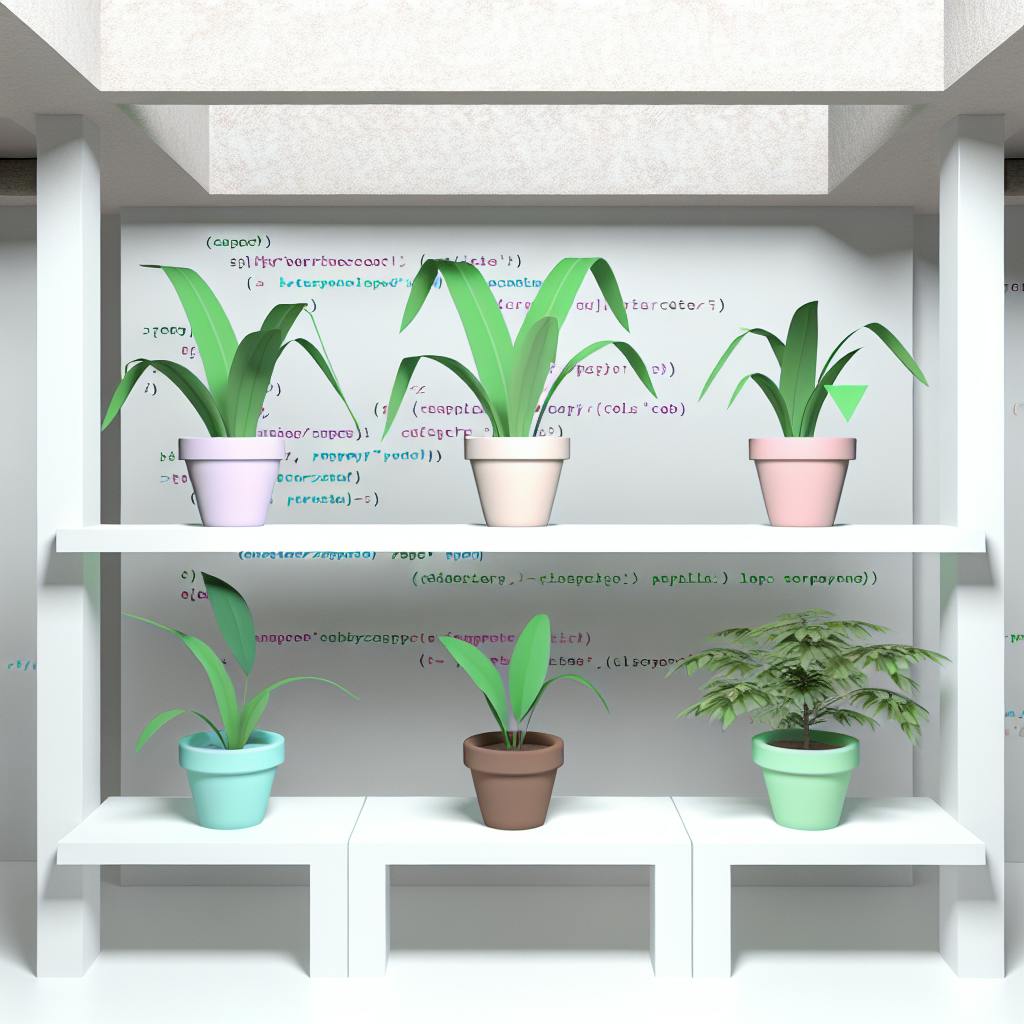Code refactoring is the process of reorganizing existing code without changing its functionality to improve its internal structure, readability, and maintainability. Here are five essential code refactoring techniques:
- Extract Method: Break down long methods into smaller, reusable methods to improve readability and reduce code duplication.
- Rename Variables and Methods: Use descriptive names that accurately convey their purpose to make the code more self-explanatory and easier to understand.
- Simplify Conditional Statements: Break down complex conditions into smaller, more manageable blocks of code, use early returns, and avoid chained if-else statements to reduce cognitive load and debugging difficulties.
- Eliminate Code Duplication: Identify and extract duplicate code blocks into reusable functions or classes to reduce maintenance costs, errors, and improve readability.
- Improve Variable Scope: Minimize global variables, use descriptive names, and embrace local and block scope to keep variables isolated, reduce the risk of unintended side effects, and improve code modularity and maintainability.
BenefitDescriptionFaster DevelopmentRefactored code is easier to understand, modify, and extend, leading to faster development times.Reduced BugsClean, well-structured code is less prone to bugs and errors.Improved CollaborationRefactored code is easier for developers to collaborate on and maintain.
To ensure clean and maintainable code, refactor regularly, keep it simple, and follow established coding standards and best practices.
1. Extract Method
The Extract Method technique is a code refactoring method that breaks down a long method into smaller, more manageable methods. This technique is useful when you have a method that performs multiple tasks or has a lot of duplicated code.
Why Extract Method?
Extracting methods can improve code readability, reduce code duplication, and make the code easier to maintain. It also helps to identify independent parts of the code that can be tested separately.
Benefits of Extract Method
Here are some benefits of extracting methods:
BenefitsDescriptionMore readable codeBreaking down a long method into smaller methods makes the code easier to read and understand.Less code duplicationExtracting methods helps to identify duplicated code and replace it with a single method call.Improved maintainabilityWith smaller, independent methods, you can make changes to one method without affecting other parts of the code.
Here is an example of how you can apply the Extract Method technique:
Before:
void printOwing() {
printBanner();
// Print details.
System.out.println("name: " + name);
System.out.println("amount: " + getOutstanding());
}
After:
void printOwing() {
printBanner();
printDetails(getOutstanding());
}
void printDetails(double outstanding) {
System.out.println("name: " + name);
System.out.println("amount: " + outstanding);
}
By extracting the printDetails method, you can make the printOwing method more concise and easier to read. You can also reuse the printDetails method in other parts of the code.
Remember to choose descriptive names for your extracted methods and to document them properly to ensure that other developers understand their purpose.
2. Rename Variables and Methods
Renaming variables and methods is a simple yet effective code refactoring technique that improves code readability. This technique involves giving variables and methods descriptive names that accurately convey their purpose.
Why Rename Variables and Methods?
Poorly named variables and methods can lead to confusion and make the code difficult to understand. By renaming them, you ensure that the code is self-explanatory, making it easier for other developers to understand and maintain.
Benefits of Renaming Variables and Methods
Here are the benefits of renaming variables and methods:
BenefitsDescriptionEasier to ReadDescriptive names make the code easier to read and understand.Less ConfusionRenaming variables and methods reduces confusion and ambiguity, making it easier for developers to work with the code.Better MaintenanceWith descriptive names, you can easily identify and modify specific parts of the code, making maintenance easier.
Here's an example of how renaming a method can improve code readability:
Before:
public void ImportOne(Profile profile)
{
// import profile data
}
After:
public void ImportSingleProfile(Profile profile)
{
// import profile data
}
By renaming the ImportOne method to ImportSingleProfile, you make it clear what the method does, making the code more readable and maintainable. Remember to choose descriptive names that accurately convey the purpose of the variable or method.
3. Simplify Conditional Statements
Conditional statements, such as if-else statements, can become complex and difficult to understand when they are nested or have multiple conditions. This complexity can lead to errors and make the code harder to debug.
Why Simplify Conditional Statements?
Complex conditional statements can lead to:
- Increased cognitive load: Developers need to spend more time understanding the logic behind the conditional statements, which can lead to mental fatigue and errors.
- Debugging difficulties: Complex conditional statements can make it harder to identify and fix errors, leading to longer debugging times.
- Code maintenance challenges: When conditional statements are complex, it becomes harder to modify or extend the code, which can lead to technical debt.
How to Simplify Conditional Statements
To simplify conditional statements, follow these best practices:
Best PracticeDescriptionBreak down complex conditionsBreak down complex conditions into smaller, more manageable blocks of code.Use early returnsUse early returns to simplify conditional statements and reduce nesting.Avoid chained if-else statementsAvoid chaining multiple if-else statements, which can lead to complexity and errors.
Here's an example of how to simplify a conditional statement:
// Before
if (isUpdateReady) {
if (isForceUpdate) {
if (isSynchCompleted) {
updateDbMain(true);
updateBackupDb(true);
} else {
updateDbMain(false);
updateBackupDb(true);
}
} else {
updateCache(!isCacheEnabled);
}
}
// After
if (!isUpdateReady) {
updateCache(!isCacheEnabled);
return;
}
if (isForceUpdate) {
if (isSynchCompleted) {
updateDbMain(true);
updateBackupDb(true);
} else {
updateDbMain(false);
updateBackupDb(true);
}
} else {
updateDbMain(false);
updateBackupDb(false);
}
By breaking down the complex conditional statement into smaller blocks of code, we can improve code readability and maintainability. Remember to always prioritize simplicity and clarity when writing conditional statements.
sbb-itb-8abf120
4. Eliminate Code Duplication
Code duplication occurs when the same code is repeated in multiple places. This can lead to maintenance issues, as changes need to be made in multiple locations, increasing the risk of errors and inconsistencies.
Why Eliminate Code Duplication?
Code duplication can result in:
IssueDescriptionHigher Maintenance CostsDuplicate code requires more effort to maintain, as changes need to be made in multiple locations.Error ProneWhen duplicate code is updated, there's a higher chance of introducing errors or inconsistencies.Reduced ReadabilityDuplicate code can make the codebase harder to understand, as identical blocks of code can be confusing.
How to Eliminate Code Duplication
To eliminate code duplication, follow these best practices:
Best PracticeDescriptionExtract Reusable FunctionsIdentify duplicate code blocks and extract them into reusable functions or classes.Use Inheritance and PolymorphismLeverage object-oriented programming principles to create reusable code that can be inherited or polymorphic.Avoid Copy-Pasting CodeRefrain from copying and pasting code blocks, as this can lead to duplicate code and maintenance issues.
Here's an example of how to eliminate code duplication:
// Before
int sum_a = 0;
for (int i = 0; i < 4; i++)
sum_a += array_a[i];
int average_a = sum_a / 4;
int sum_b = 0;
for (int i = 0; i < 4; i++)
sum_b += array_b[i];
int average_b = sum_b / 4;
// After
int calculateAverage(int[] array) {
int sum = 0;
for (int i = 0; i < 4; i++)
sum += array[i];
return sum / 4;
}
int average_a = calculateAverage(array_a);
int average_b = calculateAverage(array_b);
By extracting the duplicate code into a reusable function, we can reduce code duplication and improve maintainability. Remember to always prioritize code simplicity and readability when eliminating code duplication.
5. Improve Variable Scope
Improving variable scope is a crucial code refactoring technique that enhances code maintainability, readability, and performance. In JavaScript, variable scope plays a vital role in determining the behavior and structure of your code.
Minimize Global Variables
Global variables can lead to naming conflicts and make your code harder to maintain. To avoid these issues, minimize the use of global variables and only use them for variables that genuinely need to be accessed throughout your application.
Use Descriptive Variable Names
Using descriptive variable names is essential for improving code readability and maintainability. Clear and concise variable names convey their purpose, making it easier for you and others to understand your code.
Embrace Local and Block Scope
Local and block scope help keep variables isolated and contained, reducing the risk of unintended side effects and making your code more modular and maintainable.
Here are some best practices to improve variable scope:
Best PracticeDescriptionMinimize Global VariablesLimit the use of global variables to avoid naming conflicts and maintainability issues.Use Descriptive Variable NamesUse clear and concise variable names to convey their purpose and improve code readability.Embrace Local and Block ScopeUse local and block scope to keep variables isolated and contained, reducing the risk of unintended side effects.
By following these best practices, you can improve variable scope, reduce the risk of bugs, and create code that is easier to read, understand, and maintain.
Conclusion
In conclusion, the five code refactoring techniques discussed in this article are essential for maintaining clean, readable, and maintainable code. By incorporating these practices into your coding workflow, you can reduce technical debt, improve code performance, and enhance overall code quality.
Benefits of Refactoring
Refactoring your code can lead to:
- Faster development
- Reduced bugs
- Improved collaboration among developers
Best Practices
To ensure clean and maintainable code, remember to:
Best PracticeDescriptionRefactor regularlyRegularly review and refactor your code to maintain its quality.Keep it simpleWrite simple, easy-to-understand code that is easy to maintain.Follow coding standardsAdhere to established coding standards and best practices.
By following these best practices and incorporating the five code refactoring techniques into your workflow, you can ensure that your code remains clean, efficient, and easy to understand.
So, start refactoring today and take the first step towards cleaner code!
FAQs
What are code refactoring techniques?
Code refactoring techniques are methods used to improve the internal structure and design of software code without changing its external functionality. They help to simplify code, reduce technical debt, and improve code readability and maintainability.
What makes code clean?
Clean code is written in a way that makes it easy to read and understand. It follows a set of conventions, standards, and practices that make it simple to maintain, debug, and modify.
Characteristics of Clean CodeDescriptionSimpleEasy to read and understandConciseFree from unnecessary complexityExpressiveClearly conveys its purposeFree from redundancyNo duplicated code or logicEasy to maintainSimple to modify and update
By following these principles, developers can write clean code that is efficient, reliable, and easy to maintain.
Related posts








